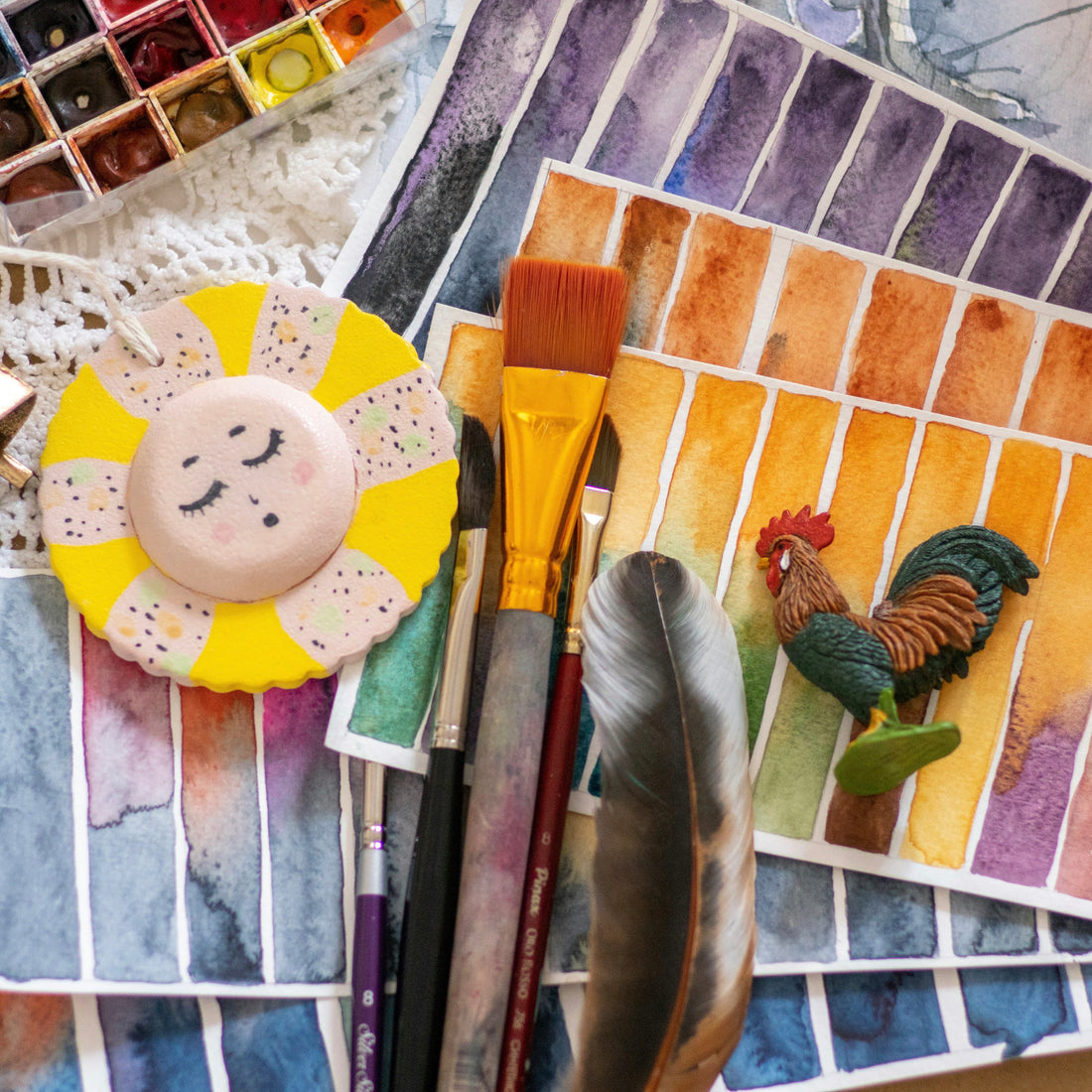1. Saturation
Saturation refers to the intensity or purity of a colour. A highly saturated colour is vibrant and pure, while a less saturated color appears duller or grayer.
-
Increase Saturation:
The only way to increase saturation is by adding more pigment. This is why buying artist quality paint will give you more saturated colours.- Tip: Avoid adding white, black, or complementary colours, as these tend to desaturate the colour..
-
Decrease Saturation:
To reduce saturation (make the colour duller), mix in a small amount of its complementary colour (the colour opposite it on the color wheel). This will "gray down" the colour without changing its hue drastically. Alternatively, add a small amount of white, black, or gray.
2. Value
Value refers to how light or dark a color is, independent of its hue or saturation.
-
To lighten a color, add white to it. This is called a "tint" of the colour.
- Tip: Be careful when lightening, as adding too much white can also reduce the saturation, making the colour appear less vibrant
-
To darken a color, add black (for a shade) or a very dark complementary color. Adding too much black can make the color look muddy, so use it sparingly. Alternatively, you can add a dark version of the colour (like dark blue to darken a light blue) without introducing too much black.
3. Hue Refers to the Actual Colour
Hue refers to the name of colour itself (e.g., red, blue, yellow, etc.). Changing the hue means shifting the colour to a different part of the colour spectrum.
-
Change Hue (Shift to a Different Color):
To shift the hue, you need to mix your base color with other colours. Red and yellow would give you orange.
As an example say you have a pure green like chromium green.
- To reduce saturation: You could mix in a bit of red (its complementary color), which would make the green less vibrant and more muted.
- To make a tint: Add some white to lighten the green, it will desaturate it somewhat
- To make a tone: Add some black or grey
- To change the hue: Add a bit of blue to shift the green toward teal, or add yellow to shift it towards a yellow-green.
Pro Tips:
- Avoid over-mixing: Sometimes, it’s better to make small adjustments and test your colors on a palette or scrap paper before applying them to your artwork.
- Use a colour wheel: A colour wheel is your friend, at least until you become very comfortable with colour mixing.
- Experiment with glazes: If you're painting in layers, you can control saturation and value with glazes (thin layers of paint that affect the colour beneath.
- Practice: Make colour charts, explore mixing, dedicate a sketch book to this practice.

